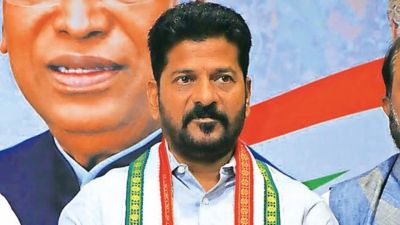NGOs squirm as Govt opts for sample survey
NEW DELHI, APRIL 14: Even as the Home Ministry is dragging its feet on inclusion of the disabled in the 2001 census, the Minister of State...

NEW DELHI, APRIL 14: Even as the Home Ministry is dragging its feet on inclusion of the disabled in the 2001 census, the Minister of State for Social Justice and Empowerment Maneka Gandhi said on Thursday that a sample survey will be carried out by the National Sample Survey Organisation (NSSO) of the Ministry of Programme Implementation this year.
She did not elaborate whether the survey, which has been criticised by disability groups as a short cut, will rule out census. Asked if the disabled were likely to be included in the census this time, she said that a sample survey has been ordered and the NSSO is carrying it out.
The Home Minister L K Advani had promised to look into possibilities for a census inclusion last month after he was told that the present figures for the disabled are misleading and that they were derived from a sample survey done in 1991.
The official figure on the number of disabled at present is based on the national sample survey done in 1991 which gave the figure of 1.9 per cent which has been rejected by many disability groups as misleading and unreliable. And it is this experience which is at the root of demands for a census rather than a sample survey.
Javed Abidi, a disability rights activist here, points out that even figures of small countries like Nepal (5 pc) and Pakistan (4.9 pc) are much bigger, and so are those of developed countries like US (9 pc) and Netherlands (11.5 pc). Commenting on the demerits of sample surveys, he said, "If you do not find a single blind person in a sample you have selected, you conclude that there is not blindness in India!"
Census inclusion is something which even the Planning Commission has recommended in 1997 much after the 1991 sample survey was done, indicating that the commission does not consider the survey figures adequately reliable.
This is what the Planning Commission said in the The Ninth Five Year Plan (1997-2002) page 377, item 3.10.31: "To ensure welfare and planning for the disabled more meaningfully there is an impending need for the office of the registrar general and the census commissioner to revive their practice of 1981 census to collect the data on the size of the population of persons with various types of disabilities and to make it available through the next population census of 2001 AD."
The 1981 census was the first and only one in independent India which included the disabled. But it was criticised for its figure of .9 per cent which it got as it left out the mentally handicapped and the hearing impaired. Besides it classified the disabled into such limited categories of "totally crippled, totally dumb and totally blind", leaving out the majority of the disabled who are seldom disabled "totally". And the response of the Government to the criticism, was to exclude the disabled from the census rather than rectify the errors.
Anita Ghai, an activist for the rights of the disabled and a faculty member of the Delhi University, says that the Government should have decided on its own to include the disabled in the census as it was necessary for the implementation of the Disability Act which came into being in 1995. "In the other countries inclusion in census naturally followed or preceded such a legislation," says Ghai.





- 01
- 02
- 03
- 04
- 05


























